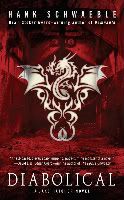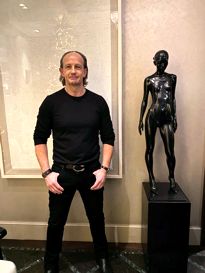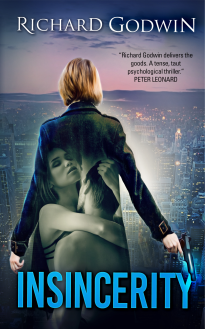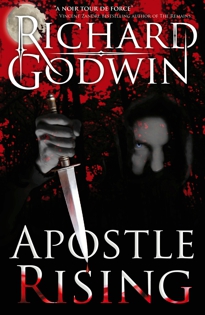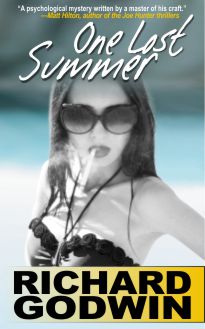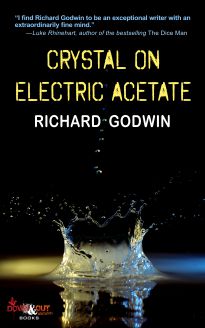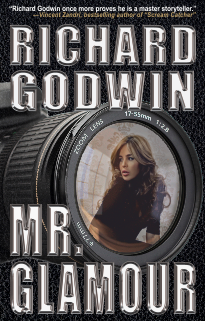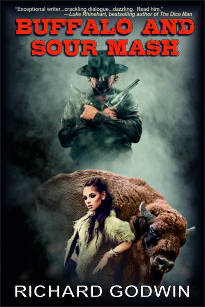
Tim Hallinan has had an interesting career. He started writing in the 1990s with a series of LA private-eye books. At the time he owned an international television consulting company advising corporations like IBM, GM, ExxonMobil, Hallmark, Bank of America. In 1993 he had the idea for the Bangkok novels. In 2001 he wrote A Nail Through The Heart and found himself in an auction situation for the series. Since then he’s written several novels in the Poke Rafferty/Bangkok series. Little Elvises and Pulped will be released this summer.
He met me at The Slaughterhouse where we talked about E books and revenge.
How has your experience of owning a television consultancy company and advising large businesses on their corporate image influenced your writing?
I found my way into business after having spent years in college and then other years as a sort of post-hippie guy in bands (one of the bands I was in went on to sell a trillion records as Bread) and as a somewhat substance-addled free-lance writer. The business experience was like a rocket into another world, or several other worlds. To put it mildly, it greatly expanded my frame of reference.
 At one time or another I spent time with everyone from the then-CEO of General Motors to Cary Grant. I spent huge amounts of time in corporate boardrooms and got a pretty good sense of how corporate culture works. There are bits and pieces of that in the Simeon Grist books. I also spent months and months on the sets of films, television shows, and plays. I got to know stars, extras, directors, producers. I learned a lot about how the television industry works. There’s quite a bit of that in the Junior Bender books (especially CRASHED, with its doped-up former child star and the film sets in the book) and it also plays a role in the Simeon Grist books, probably most heavily in SKIN DEEP, in which the sadistic dream-boy TV star is based on a real star I worked with back then — a total horror show who looked like the boy next door if the boy next door were a TV star.
At one time or another I spent time with everyone from the then-CEO of General Motors to Cary Grant. I spent huge amounts of time in corporate boardrooms and got a pretty good sense of how corporate culture works. There are bits and pieces of that in the Simeon Grist books. I also spent months and months on the sets of films, television shows, and plays. I got to know stars, extras, directors, producers. I learned a lot about how the television industry works. There’s quite a bit of that in the Junior Bender books (especially CRASHED, with its doped-up former child star and the film sets in the book) and it also plays a role in the Simeon Grist books, probably most heavily in SKIN DEEP, in which the sadistic dream-boy TV star is based on a real star I worked with back then — a total horror show who looked like the boy next door if the boy next door were a TV star.
And business also took me to Thailand, where the Poke Rafferty books are set, for the first time. I was working on a PBS documentary about the first tour of Japan by a Western symphony orchestra (the LA Philharmonic) and I had a few weeks of vacation scheduled, but Japan was like zero degrees, so I headed for warmer climates and ended up in Bangkok. Within five days I’d taken an apartment there.
What kind of killings do you relate to and at what point do you cease to relate to a killer?
I “relate” to all killings and killers, although I relate to some of them very badly indeed. The kind of killings I find most interesting, though, are the ones in which the killer feels he or she is acting morally – that the killing is an appropriate and justifiable thing to do.
I don’t mean spur-of-the-moment self-defense, because that may be thrilling if it’s written well, but I don’ t think it’s any more interesting than any other largely instinctive behavior. To take an example from the Poke books — without giving the story away — when I wrote A NAIL THROUGH THE HEART, which is the first in the series, I was trying to establish Bangkok as an environment that’s especially rich in gray areas, which is the moral territory in which I’m most interested. (I think an absolute sense of right and wrong is a luxury of the well-fed.)
So I was taking this middle-class American guy, Philip Rafferty — nicknamed “Poke” because as a little kid he poked his nose into everything — and plunking him down in a city that’s all gray areas. I figured one way to do it would be to turn the detective story part of the first book inside-out — to make all the murderers innocent and all the victims guilty. I wound up giving a lot of thought to what comprises a justifiable murder, and in the end Poke commits one himself. It’s partly self-defense but there’s a conscious decision before he pulls the trigger, and that very brief decision process is one of my favorite parts of the book. Some readers have said they laughed when it happens, and I take that as a high compliment.
 I don’t actually believe that murder is ever truly justified, but at the same time I do believe that there are people who shouldn’t be allowed to live. So that puts me in a moral conundrum. Generally speaking, Poke doesn’t kill people because my concept of his character won’t allow it. In NAIL he does it partly in self-defense, but there’s a really glaring exception to this rule in THE QUEEN OF PATPONG, where he quite deliberately administers the final, fatal injury to someone who’s already down, helpless, and badly hurt. I deliberated over this for weeks and then went with it, in part because the man HAD to die, and in part because it prompts my favorite line in the book: “A sigh escapes the circle of women.” (Obviously, that line needs to be read in context.) I was surprised when my publisher accepted it.
I don’t actually believe that murder is ever truly justified, but at the same time I do believe that there are people who shouldn’t be allowed to live. So that puts me in a moral conundrum. Generally speaking, Poke doesn’t kill people because my concept of his character won’t allow it. In NAIL he does it partly in self-defense, but there’s a really glaring exception to this rule in THE QUEEN OF PATPONG, where he quite deliberately administers the final, fatal injury to someone who’s already down, helpless, and badly hurt. I deliberated over this for weeks and then went with it, in part because the man HAD to die, and in part because it prompts my favorite line in the book: “A sigh escapes the circle of women.” (Obviously, that line needs to be read in context.) I was surprised when my publisher accepted it.
Poke, I always have to remember, is a writer, not an action figure. He doesn’t have killing skills, as Jack Reacher does. He’s not an ex-cop, like many fictional private eyes are. He’s a writer who fell in love with a city and then with his wife and the street child they adopted, and all he really wants to do is have a traditional, healthy, loving existence with his wife and daughter. He wants to build a family to replace the one his father abandoned, and he wants to preserve that family. So he can’t be running around killing people all over the place. In the book I’m writing now, all he really wants to do is paint the apartment. So I have to structure a relationship with violence and murder that’s consistent with a guy who just wants to paint the apartment for his wife and kid.
Do you think e books are revolutionising the publishing world and do you see a future for the traditional paperback?
In my opinion, e-books are the most important transformation in publishing since the mid-19th century, when the surge in the popularity of novels gave birth to the triple distribution whammy: the practice of serializing novels in magazines, the publication of hardcover editions, and the rapid growth of “circulating libraries.”
That’s pretty much what we’ve had ever since, until about five years ago. Books were printed at substantial cost, sometimes serialized in magazines, sold in stores, and circulated through libraries. What changed? Prices, mostly — cheaper hardcovers and paperbacks made books available to the lower (economic) classes and made publishing a big business.
But even with a more democratic distribution system, barriers to publication remained in place. There were two big ones: first, cost and know-how — publishing and distributing a book was expensive and required an encyclopedia’s worth of info about stores, critics, etc. Most people simply couldn’t afford it and didn’t have the expertise.
The second barrier was geographic — if someone’s book didn’t appeal to a small number of people living and working in a few blocks of Manhattan, the rest of the country would never read it.
Well, e-books have lowered the cost of self-publishing essentially to nothing, and broken the New York stranglehold over which books Americans get to choose.
But when we disposed of traditional publishing, we also eliminated the biggest crap filter. I’m not saying that the big publishers don’t put out crap — of course, they do. But they rejected 1000 pieces of crap for every one they published.
Now all that crap is available. Tens of thousands of terrible books, at our fingertips.
Of course, there are also thousands of absolutely terrific books that would never have found a way into a legacy publisher’s spreadsheet. They weren’t “commercial” enough or they weren’t “trendy” enough or the publishers who rejected them were boneheads. So now the people who wrote then have a way to make their voices heard, and that’s great.
But still, this new publishing phenomenon needs to develop its own crap filters, or at least a sifting mechanism that makes it easier for readers who are looking for a specific kind of crap to find it. And I think that’s what’ll happen next. I just hope that when it comes, it’s not elitist and based in New York.
Tell us about your Poke Rafferty thrillers.
The Poke Rafferty books are intended to be thrillers, as opposed to mysteries. For me, the difference between a thriller and a mystery is the central question asked by the book. In a mystery, it’s “Whodunnit?” In a thriller, it’s “How do you survive it?” Thrillers often gain in suspense from the bad guys/girls being on the page, apparently out-thinking the protagonist or setting traps for him or her. One of the tools thriller writers can use that mystery writers can’t is the kind of irony where we see our hero planning meticulously for something we know in advance is doomed to fail. Or going somewhere, feeling as safe as an oyster, when we know that he’s walking into a giant shucking knife.
Still, there are mystery elements in the Poke books, too. We don’t know who’s behind one sequence of events in BREATHING WATER until just before the book ends.
But for me, the center of the books is the continuing story of that little hand-built family made up of Poke, the American travel writer; Rose, the former bar girl he’s married; and Miaow, the street child they’ve adopted. They’re what interests me most, and when I look at story ideas, the first criterion is always, “What’ll it do to the family? How will they get through, and how might it change them?”
You have three people from vastly different backgrounds, different religions, languages, expectations, ranges of experience — and they’re trying to find their way to each other across these very deep divides. With all the moral gray areas in Bangkok, all the violence, the amorality, the exploitation, the victimization, they’re trying to build a life together that’s based on love.
I think that’s the bravest thing in the books.
I gave Poke a family in the first place because I thought it might serve as a kind of moral counterweight to some of the other story elements. I didn’t expect it to move front and center to the extent it has, but it makes me very happy that it did. The series has turned into a continuing family saga, told in chapters that take place about eight months apart, each of which has a thriller wrapped around it.
There are times I look at the whole series as Miaow’s story — abandoned on a sidewalk at the age of three, surviving an enormously cruel environment, being adopted by two people she initially distrusts and comes to love, although she’s never secure. In the book I’m presently writing (or trying to write), Rose learns that she’s pregnant, which is a life-threatening development for Miaow. They’re going to have a kid who’s REALLY theirs. Where does that leave her? That, combined with one of the book’s sub-plots, takes her pretty close to the edge, an edge she might not be able to re-cross. And since I haven’t finished the book, and I never plot ahead, I don’t know for sure that she will re-cross it — at least, in this book. In this series, nothing is necessarily safe.
Do you think revenge is lawless justice and its appeal lies in the fact that it involves men and women stepping outside the law?
I think that the appeal of revenge in crime fiction is the same appeal exerted by the genre in general — in an age where most of us feel we live increasingly passive lives, our concerns dwarfed by the sheer complexity of the problems and challenges of the day, in enacting vengeance (or solving a crime in a whodunit, or surviving the challenges of a thriller) the protagonist takes direct action. Cuts through the complexity and the equivocation and does something we probably all fantasize doing from time to time: going from Point A to Point B in as direct a line as possible, no matter what’s in the way.
Then, of course, there’s the difficulty with the word, “lawless.” We all know that the law these days (and probably throughout history) is flawed. It’s weighted to the advantage of the rich and powerful. It’s made to look stupid by skillful, amoral defense attorneys. A merciless serial killer dies of old age in prison twenty years after being sentenced to death. The letter of the law is manipulated (or so it seems) until the spirit of the law becomes almost beside the point.
So vengeance and vigilante behavior have a strong appeal. And, when you think about it, we’ve always wanted to read about people who went out and challenged the beasts, one on one.
Who are your literary influences?
I have two sets of literary influences, one for quality of writing and one for approach to writing.
Those who influence my writing style — the “quality” crew — are people who write character-driven books that push the envelope in one way or another, and do so in prose that doesn’t call attention to itself, but instead serves as a sort of clear window through which we see the action. I strongly dislike books in which people do stupid or uncharacteristic things because the plot demands it, and I dislike even more strongly writers whose prose seems continually to be saying, “Look how clever I am.”
These writers include Raymond Chandler, Dashiell Hammett, T. Jefferson Parker, Sue Grafton, Thomas Perry (whose prose is virtually invisible), the early Thomas Harris, Bill James, Robert B. Parker, and many, many others. John Lescroart wins applause from me for how skillfully he wove the story of Dismas’ family into the books.
The other group — the “teach me how” group — are Chandler (again), whose letters provide more good writing advice than any other single source I know of; Anthony Trollope, my favorite Victorian, who wrote five hours by the clock every day, seven days a week — at home, on ships, in jolting carriages, wherever he was — and who, if he finished a book with four minutes to go, would grab a blank piece of paper and begin a new one. And among writers who have written writing books, Anne Lamott, for the amazingly helpful “Bird By Bird.”
And then there’s a third group, writers I just hopelessly admire for the length of their reach and who inspire me, although I know I’ll never be listed among them, to go up on tiptoe in my own work. They include Haruki Murakami and Banana Yoshimoto for magical realism and (in Yoshimoto’s case) a surgically precise knowledge of the human heart; Trollope and Anthony Powell for the depth and breadth of their multi-volume novels, respectively THE PALLISERS and A DANCE TO THE MUSIC OF TIME, both of which tell stories far too complex and highly populated to be crowded into a single book; William Gibson for the spiderweb-dry, deeply three-dimensional worlds he creates; and many, many others.
The trouble with answering this question is that I’ll be up for several nights thinking of all the people I’ve left out. Everyone I’ve ever read who made a character breathe, or convinced me that he knew what was behind the windows in every building he or she described, or startled me with a recognition of something I felt I’d known all along but had never verbalized — they’re all my influences.
Do you think crime fiction is about resolving moral conflict?
I actually think that crime fiction is about the restoration of moral order and is therefore one of the most optimistic of all genres.
It always puzzles me when people say crime fiction is too dark for them. In 95% of crime novels — whether they’re mysteries or thrillers or something in between, you can trace this essential line: a break in the moral universe — a theft, a murder, an injustice — prompts at least one character to take action and, after a certain number of failures and reversals, the moral order is restored — crime solved/culprit apprehended/death avenged/some sort of closure, to use a modern word, achieved.
This is an ancient progression, when you think about it — all the way back to Greek tragedy, and certainly forcefully present in Shakespeare.
I find a lot of so-called literary fiction to be more bleak and less reassuring than most of crime fiction. There’s a kind of fashionable nihilism that’s crept into modern literary fiction (and practically taken over modern literary criticism). Anything that ends happily, or even moderately well, is scorned as Hallmark pabulum, unrelated to “real life,” whatever that means. Personally, I find that real life is full of happy endings, however temporary they may be — the X-ray is clean, the automobile accident is averted, people actually fall in love and marry (or not) without one of them being mangled, mutilated, or killed somehow. Sure, they’re both going to die eventually, but that’s what picture frames are for — to tell you that the part of life we’re looking at begins over here and ends over there. Otherwise, all paintings would have to be infinite and all books would have to open with the Big Bang and not end at all.
So we’re taking a segment of life as our story, and I think there’s nothing more “real” about a bleak ending than there is about a happy one. It’s not at all necessary for me to have a story end with the family shattered, fog on a beach, and a child’s colored sneaker washing up onto the sand. Actually, thanks anyway.
I’ll stick with good crime fiction and literary fiction by people who actually enjoy some aspects of being alive.
Do you think literature should disturb us?
I don’t know that literature needs to disturb us, except in a broad sense of the word. It should penetrate our surface deeply enough to provoke some thought or feeling, and it can’t do that without stirring the waters of our consciousness, so to speak. Maybe my problem with the word “disturb” is that I equate it with sensational effects — skyrockets of violence or noir for noir’s sake – noir that isn’t rooted in any kind of real world vision but simply in the conviction that noir is cool. Fireworks are spectacular, but they’re the shallowest form of entertainment, beauty without connections to the world we live in.
I think good writing opens us up to speak to something inside us and because it does that, we’re able to use what we’re reading as a sort of mirror that reflects light, even if it’s only for an instant, on things that matter in our lives. It can do this with a joke or a tragedy or anything in between. If we put down a book with the feeling that it’s touched us in a personal way, then it probably has. Doesn’t have to be a conversion or a massive illumination. The word “recognition” used to be used a lot, especially in religious literature, and I think good writing provides us with recognitions: I do that; I should have done that; oh, that’s what she meant; why didn’t I appreciate that when I had it; that’s a blessing I share.
Even if if’s just on the level of That reminds me, I think that’s good writing at work.
Let me finish this woolly answer with something even woollier: I think the responsibility of good writing is to entertain, if only because it has to hold the reader before it can do anything else at all. Lots of bad writing and bad films entertain without doing anything else, and I think we’ve come to underestimate the importance of a writer being entertaining. But when you think about it, almost all “great” writing is entertaining writing, or readers wouldn’t have stayed with it.
To what extent do you think that sexual pathology is a motivating factor in extreme crimes and how relevant do you think it is to crime fiction?
I imagine crime more than I research it, but I’d venture a guess that sexual pathology is ninety-five percent of serial killing, whether the victims are of the same or the opposite sex as the murderer; I’d say that virtually all sadism is sexually based.
But to answer the question, I have to divide myself in two. As a person, I’m certain that these crimes are in large part sexually motivated and that the psychosexual tangle is Gordian in complexity. As a writer, though, I don’t usually deal with this kind of material. Having read dozens and dozens of serial killer and sadism novels, some brilliant and some dreadful, I decided that in my books we’d meet these people the same way their victims do. This is partly an aesthetic choice — I don’t really want to spend time in these monsters’ heads when I could be exploring the almost equally complex tangle of good and not-so-good, love and resentment, love and loathing that characterizes people who are (I hope) more like my readers.
I’ve only written a couple of serial killers, and I have to admit that I didn’t find them the most interesting characters in the books. What I thought was interesting was how a life is blown to pieces when one of these beasts lumbers into it. In THE QUEEN OF PATPONG, I could have spent tens of thousands of words on how Howard Horner got that way. But I decided that it didn’t matter a damn how he got that way. What mattered was how my characters would deal with him, how they would try to survive him. And in retrospect, I’m glad I did it the way I did.
Other writers handle this materially very well, so I’ll let them have it.
What is your view of cozies?
Cozies trouble me — not that I don’t think they should be written or that people who like them should be denied an unending stream of them — but they bother me.
First, I think they’re sort of literary Neanderthals — they evolved for a different environment and then a new species arose, better suited to the environment of today. So far (as I’m sure happened to the Neanderthals, too, for awhile), the cozies have found a niche where they can continue to exist, even if they’re now exchanging genes among close relatives at an alarming rate.
The sensibility of the cozies is of course the sensibility of the so-called “classic” mystery, in which murder, blood, spattered brains, and bone fragments are banished just beyond the margins of the page, in favor of focus on the dry logic of detection and a wistfully envious glimpse of the so-called upper classes (or, in America, the rich). In essence, they take one of the human world’s most emotional acts, murder, and turn it into an intellectual puzzle.
This is in turn (I think) a reflection of the post-Victorian world in which these books came into being, a world in which the man of the house scanned the papers first to delete the more vivid bits before the little women read them. The classic cozy had it both ways — a thrilling jolt of evil, relegated to a tiny, well-fenced corner of the book, and an Age of Reason response. In a time in which Darwin was thought to be in bad taste, these books demonstrated that man/woman had risen from, rather than descended from, the apes that represent the natural world. (And one of which Poe even uses as an instrument of murder in RUE MORGUE.)
But the cozies seem increasingly sterile and artificial to me in today’s post-Darwin, post-Freud, post-Hitler, post-Pol Pot world of the 24 hour news cycle and Huffington Post fascination with the more scabrous human crimes. Murder is no longer a rumor. Murder is a daily, perhaps hourly fact, an act in which someone’s life is brought prematurely to an end, often painfully and messily. We’ve seen the pictures. We understand (or think we understand) that it could happen next door,or even closer than that. We even think we might understand the reasons some people choose to kill.
So Colonel Mustard in the conservatory with an exotic Amazonian blowpipe doesn’t cut it for me any more. I know, that’s an extreme and dated example, but hundreds of books are published every year in which murder is just an excuse for wisecracks or amateur sleuths armed with the exact piece of stamp-collecting arcana that’s required to solve the crime. And I think that dishonors murder victims. I think it trivializes a great sin.
To finish, I’m not saying all good books need to wallow in gore. To pick just one series, Donna Leon’s amazingly resonant Guido Brunetti books pretty much keep the murders offstage, but she uses the crimes to focus on the human heart and the unending question of how to live honorably in a world in which honor is a debased currency. There are lots and lots of books that keep the spatter off the reader’s face but still look at serious questions of good and evil, revenge and forgiveness, the sliding scale of contemporary morality. I love these books, just as I love some of their harder-edged cousins.
But you can keep Colonel Mustard.
Thanks for all this, Richard. It’s been a lot of fun, and it’s made me think about things I almost never focus on.
Thank you Tim for giving an informative and great interview.

Timothy Hallinan books and ebooks can be bought here.
Find out more about Tim and his books at his website.




